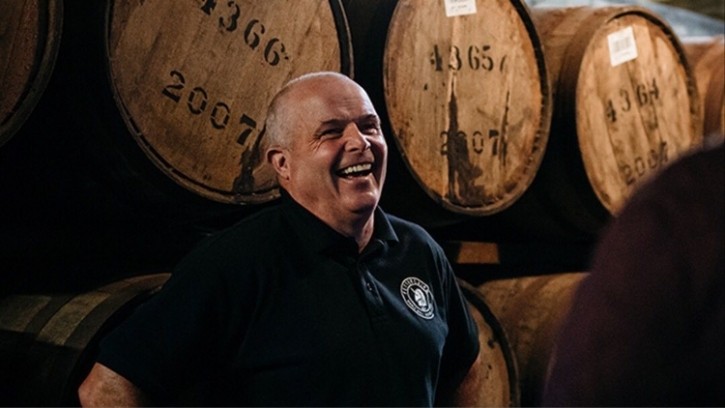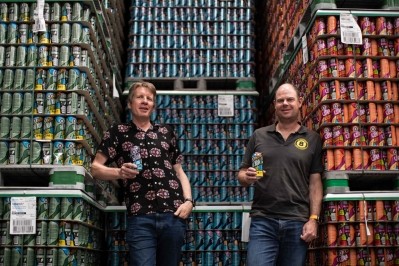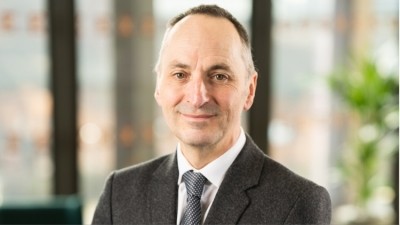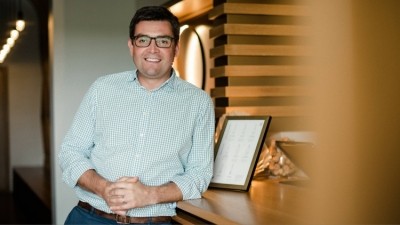Me and my team
Inside Fettercairn Distillery as it celebrates 200 years of whisky

I was born about a mile away from Fettercairn Distillery and actually moved onto the same street at the age of eight, so it has always been part of my life. The distillery is located in a village of the same name in the north east of Scotland, about 35 miles to the south of Aberdeen, and I have been lucky enough to never leave this beautiful part of the UK.
Opened in 1824, this year marks the distillery’s 200th anniversary, a milestone that we are proudly commemorating. After operating independently for almost 150 years, the distillery was purchased by whisky manufacturer Whyte & Mackay in 1973, but it retains a great level of autonomy within the partnership to this day.
At the moment, Fettercairn employs 17 people in total, including myself and the head distiller who oversees production on a day-to-day basis. We also operate a visitor centre where we welcome guests to teach them about the distillery’s heritage, modern day operations and of course our unique whisky.
Lifelong association
My time working for Fettercairn began in January 1990 when I was hired as a warehouse operator. It was a brilliant role that offered so much variety on a daily basis and is actually quite a common entry route for someone joining the world of whisky as you have to learn about the entire process. It provided me with practical experience working in all parts of the distillery that I still apply to my job today.
From there I moved into a mashing role and then into stills, before eventually being promoted to distillery brewer in 2003. I performed this role for 12 years and then in 2015, I became distillery manager, a post that I still love almost a decade later. The whisky industry has come a long way since I first started and the work is full-on, but I believe it is a great sector to be part of.
My longevity in the business is not unique at Fettercairn or within the wider industry – several of my colleagues from 1990 still work in whisky today. My cohort learned the ropes from the generation before us and we take the responsibility seriously to pass the knowledge and skills that we have built up, down to the next people entering the industry. After 34 years, I am in a position where there isn’t a single job in this distillery that I don’t know how to perform and that allows me to lead by example.
Progressive whisky production
A few years ago we established the Fettercairn 200 Club, which is an alliance with the local farming community and signifies our approach to whisky making. There are 200 farmers located within a 50-mile radius that are part of this initiative and they supply all the malt barley that is used to create our whisky. This grants the distillery access to the best locally sourced ingredients and creates a culture of collaboration with our suppliers.
This initiative also provides the farmers that supply us with a sense of ownership over the whisky that we produce and by extension the Fettercairn brand. We consider our 200 Club members true partners in the business. Based where we are, we have access to some of the most fertile land in Scotland and that translates to our final output.
Once the malt barley arrives at the distillery, it is milled and ground and then mashed with water to extract all the sugar and enzymes from the grist. The more sugar that can be extracted, the greater the overall yield, so we have to manage the temperature carefully to maintain the optimum conditions for whisky making. Fermentation is the next step, which involves adding quality yeast and leaving the mixture, in our case for 56 hours, while it converts the sugars into alcohol.
We then operate a two-batch distillation process, where we add the fermented mash – which is around 8% alcohol by volume (ABV) at this point – into the wash still. The liquid is then heated up, which causes the alcohol to evaporate and pass through the condenser. The condensed liquid is now at around 22% ABV and is transferred to the spirits still. The spirits still used at Fettercairn is unique as it features a copper cooling ring on the outside, which sprays cool fresh water down the still, leading to a lighter, more tropical spirit.
In August 2020, Fettercairn planted 13,000 oak saplings as part of our Scottish Oak programme. The saplings form what we call the Fettercairn Forest and are located about a mile and a half away from the distillery, within the wider Fasque estate who we work collaboratively with. Our hope is that in 200 years when a forest stands on that land, the oak trees will be used to fashion the barrels used by future generations of Fettercairn whisky makers. Given that this year marks 200 years of Fettercairn, it is quite poetic to see the past, present and future of the distillery reflected in this project.
Fettercairn revived
In 2018, Whyte & Mackay relaunched the Fettercairn single malt whisky range, the first releases under the brand’s name for almost a decade. This is a process that we continue to refine, but I am really pleased with the premium quality of the liquids we are producing.
With the Fettercairn name revived, we are manufacturing an average of 2.1m litres of alcohol per year, the largest quantity of whisky we have produced since I joined the business. Managing such an undertaking requires rigorous planning which is set out at the start of each year, detailing what work needs to be completed each week and when production will stop during the summer for maintenance work. My responsibility is then to ensure that this plan is followed, and that the distillery is run to the best of its ability, taking advantage of the outstanding natural resources that we have access to from the local area.
Despite the fact that we are producing more whisky than ever before, our output remains somewhat scarce and as a result we carefully manage the markets in which we operate. At the moment our whisky is primarily sold in the UK, Europe, Asia and Canada, but as stocks build up we would like to export to the USA and beyond. This measured approach is typical of Fettercairn’s ethos throughout its history, and informs how me and the rest of management formulate plans for the future.
Emperador, the parent company of Whyte & Mackay, has supported us in this planning process and I believe they are ambitious and optimistic about the potential of the Fettercairn brand. That is a great position to be in the whisky industry as it provides us with a strong foundation and allows us to focus on creating the best liquids possible.
In other news, Bio&Me chief executive Jon Walsh discusses life operating a food and drink start-up.
















